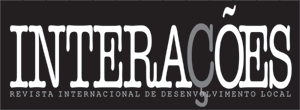Abstract
The Cerrado and Pantanal are present in the Midwest region, regions with a diversity of fauna and flora and high potential for exploration. The native fruits have characteristic flavors, significant nutritional value and compounds of great biotechnological relevance. Some native fruits and manufactured products are sold at open markets, along highways, at supply centers and at supermarket chains. Thus, this study aimed to verify the knowledge and consumption profile of native fruits from the Cerrado and Pantanal of Mato Grosso do Sul (MS) by the population. This study was exploratory, with a non-probabilistic sampling design and convenience sampling. An online questionnaire was used containing questions to characterize the sample and refering to knowing, tasting, form of consumption and place of obtaining 12 native fruits of the Cerrado and Pantanal, namely: pequi, bocaiuva, mangaba, cagaita, baru, murici, mama-cadela, buriti, araticum and guabiroba. Among the 616 valid answers, the sample was mostly composed of adults (92.29%), female (79.06%), monthly income of up to 5 minimal wages (74.72%), with complete higher education (45.94%), born (42.53%) and residents (53.90%) of MS. The best known and most tried fruit was the pequi, while the mama-chada was the least known and tried. The main form of consumption mentioned was “in natura” and the main form of obtaining was “From the Cerrado/Pantanal itself”. Participants presented moderate knowledge and a low consumption of native fruits from the Cerrado and Pantanal of MS. Thus, the importance of valuing regional food practices is highlighted as a way to increase local culture and encourage the consumption of native fruits, expanding their dissemination to the population.
Keywords
food consumption; Cerrado; Pantanal; feeding behavior

 Thumbnail
Thumbnail
 Thumbnail
Thumbnail
 Thumbnail
Thumbnail
 Thumbnail
Thumbnail
 Fonte: (A) Elaborado pelos autores (2020) e
Fonte: (A) Elaborado pelos autores (2020) e  Fonte: Elaborado pelos autores (2020).
Fonte: Elaborado pelos autores (2020).
 Fonte: Elaborado pelos autores (2020).
Fonte: Elaborado pelos autores (2020).
 Fonte: Elaborado pelos autores (2020).
Fonte: Elaborado pelos autores (2020).